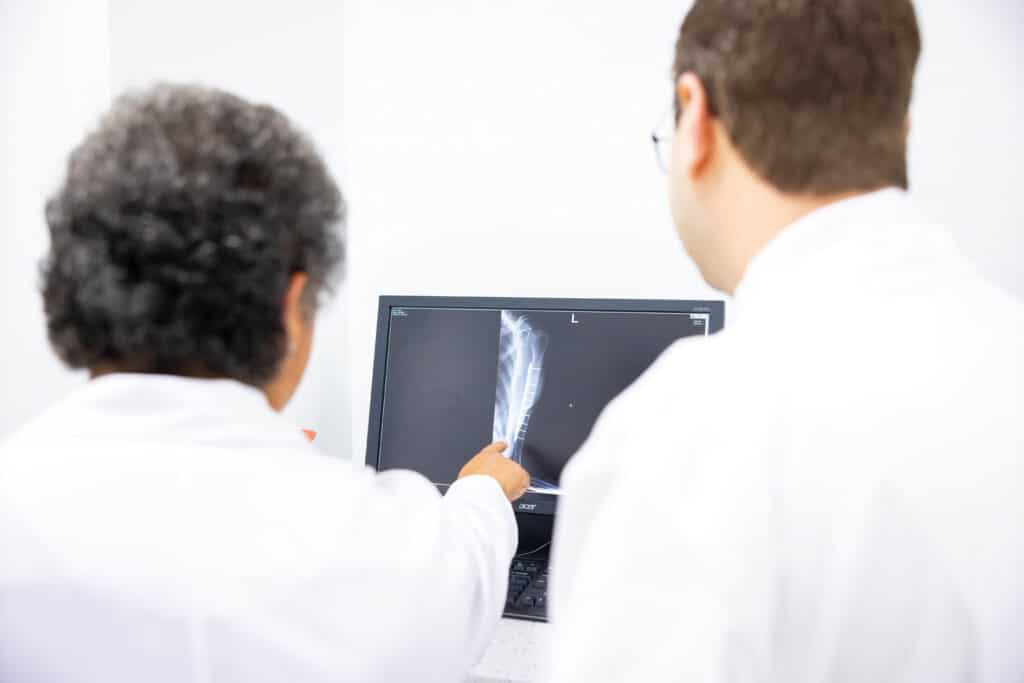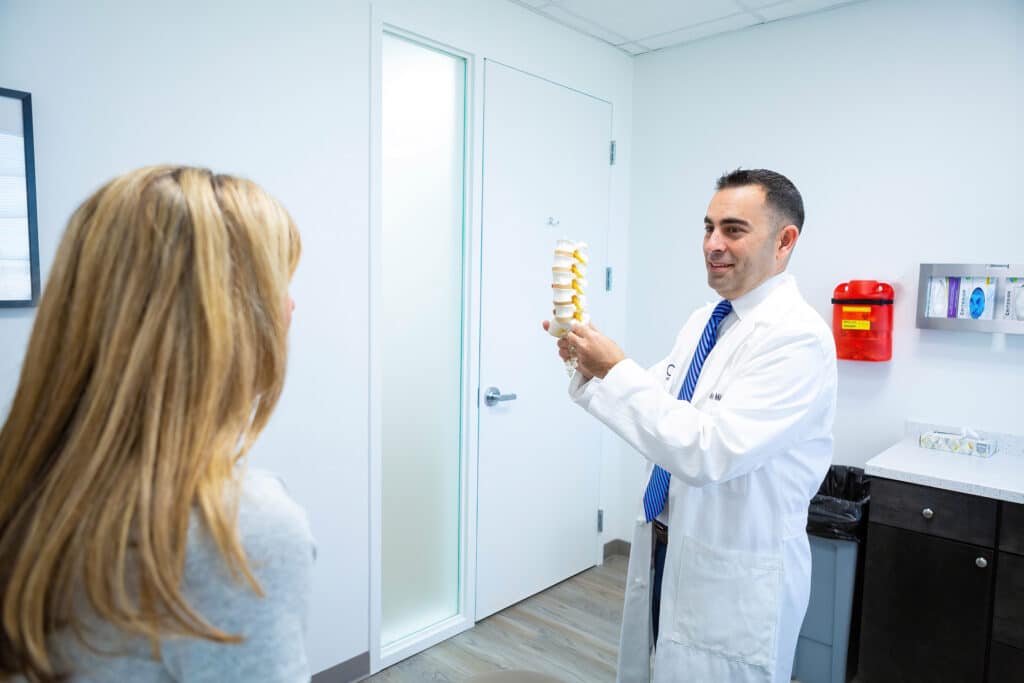
Physician Assistants
Physical & Occupational Therapists
KneeMRI ScansNon-OperativePhysiatry
Physical Therapy
Podiatry
Spine
Sports Medicine
TraumaUrgent Care
X-Ray Imaging

A cervical fracture occurs when a bone in the neck region of the spine is fractured. Cervical dislocation is what happens when a ligament injury to the neck forces two (or more) of the adjacent spinal bones to be abnormally separated from one another, causing instability. Either a cervical fracture or cervical dislocation, or both, may be seen in a patient. Fractures and dislocations of the neck spine are quite prevalent, accounting for almost half of all spinal column injuries every year.
Because the cervical spine is the most mobile area of the spinal column and is, therefore, more prone to injury, the majority of fractures and dislocations of the vertebral column occur there. Although the low back is most commonly hurt during routine, low-exertion activities, the neck is most vulnerable to injury in high-energy traumas such as motor vehicle accidents.
Motor vehicle accidents, falls, violence, and sports activities are the most common causes of cervical fractures and dislocations. The rapid collision and/or twists of the neck that occur in a millisecond during the event can cause the spine bones to fracture or the ligaments to break.
A cervical fracture or instability can result from the initial trauma or incident, which may also harm the spinal cord and nerve structures. If it occurs, the most terrible outcome of a cervical injury is the end result of a spinal cord injury and neurological deficit.
Patients with cervical fractures often experience severe, localized neck discomfort and stiffness. Patients with other injuries, on the other hand, may report pain in various locations without recognizing the severity of neck suffering.
Patients who have neurologic compression or irritation may experience numbness or weakness in their arms or legs.
There may be radiating pain symptoms, or there might not be any. Patients can have upper cervical spine fractures and spinal cord injuries, which might compromise the respiratory function of the brain, leading to problems breathing and taking a deep breath.



When a patient has been involved in an accident or suffering from trauma, especially those with neck pain, cervical spine fractures and dislocations should always be considered. The diagnosis might be difficult when the symptoms or physical findings are atypical. Some patients who have other breaks or injuries will report discomfort in various areas but not neck pain.
Patients may minimize the severity of their motor vehicle accident or trauma at times. These instances might persuade the clinician to forego ordering cervical x-rays and imaging studies, which are essential in detecting cervical injuries.
The doctor must do a thorough history and clinical examination (particularly checking palpation of the spine) to avoid misdiagnosing this condition. To accurately diagnose a cervical injury, any patient who has experienced a severe accident or trauma, especially those with neck pain, should be thoroughly examined with x-rays (and additional imaging studies as needed). While no lab tests are used to diagnose a cervical fracture, sometimes specific tests are ordered to rule out other conditions.
Treatment choices for those who have suffered a cervical fracture or dislocation are limited. Skeletal traction and close reduction, with metal pins inserted into the skull and connected to a pulley, rope, and weights, are used in the early management of severe cervical fractures and dislocations.
The objective of therapy is to preserve or enhance neurological function, maintain stability, and reduce pain. If conservative (nonoperative) treatments can achieve these goals, they are typically preferred. However, surgical stabilization is frequently required since many cervical fractures and dislocations are unstable and will not heal independently. Surgical decompression (removing bone fragments from the spinal cord) may be necessary to improve a patient's prospects for neurologic improvement and recovery after a spinal cord injury.
Brace (orthotic) therapy and medicines are examples of nonoperative options. There are a variety of cervical orthoses available, ranging from soft collars to hard plastic cervical-thoracic orthoses to halo vest immobilization (using pins inserted into the skull secured by a padded plastic vest).
Surgical procedures often include a posterior (back of the neck incision) cervical fusion (joining the spine bones together) and instrumentation (small metal screws and rods stabilizing the spine). Anterior (front of the neck incision) decompression and fusion are other possibilities, along with instrumentation. Injuries to the front of the spine that do not heal correctly may require major surgery to restore function and relieve pain.

© 2023 Princeton Orthopaedic Associates. The contents of princetonorthopaedic.com are licensed under a Creative Commons Attribution-NonCommercial 4.0 International License. Copying without permission is strictly forbidden.